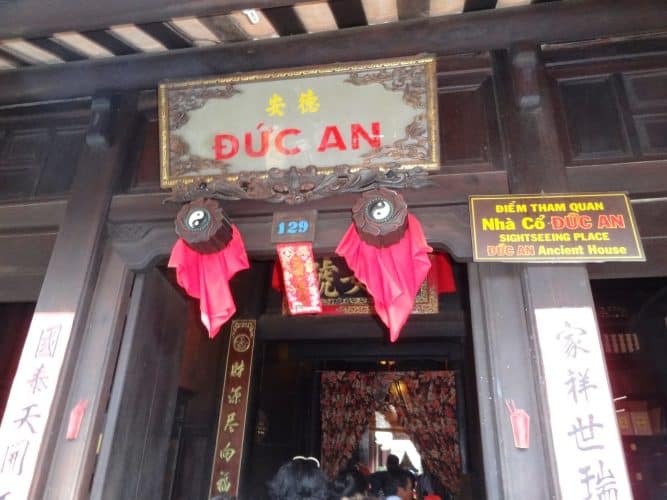The destination that tourists can’t miss.

An ancient house that is 180 years old (Photo courtesy)
The German ancient house is located at 129 Tran Phu Street, right in the center of Hoi An’s old town. Not only that, it is also very close to the Japanese Covered Bridge, which has attracted a lot of attention from tourists when they come here. With a lifespan of over 180 years, the house exudes a sense of antiquity and tranquility, reflecting the imprint of time as well as the ancient cultural traits in every detail.

This is not only the pride of the homeowners but also of the entire community (Photo collection)
It not only preserves the overall condition of the house, but even the smallest objects inside, such as pens or ink, are carefully preserved by the owner of this place, both to show dedication to ancestors and to provide visitors with a more authentic glimpse into the ancient culture of this place.
Until now, there have been 6 generations living in this house, and every year it is renovated to preserve almost entirely the beauty of ancient times.

The antique space inside the house is meticulously preserved (Photo collection).
The unique architecture of the house.
The German An ancient house combines the characteristics of ancient Vietnamese architecture and Chinese style. Its overall area is quite large compared to a typical house in the old town center. With a length of 39 meters and a width of up to 7 meters, it has a tube-shaped structure and a courtyard in the middle.

Ancient and dignified Eastern architecture (Image collection)
The front of the house features a unique, traditional design. It has a system of three doors, with the main entrance in the middle and two large windows on either side. These windows are elevated about 70 to 80 centimeters above the ground. What sets this house apart is that the entire front portion is made of wood, giving it a sense of antiquity at first glance. Moreover, unlike other traditional houses, the three doors here are quite distinctive. The main door is low, not much taller than an adult’s height. The two side doors, on the other hand, are not typical doors but rather horizontal wooden panels, known locally as “cửa ván sáng.”

The special door of the house (Photo collected).
Similar to other ancient houses in Hoi An, the ancient house of Duc An is roofed with familiar yin-yang tiles. Beneath those tiles is a system of beams, and the ceilings of the house are all made of wood, built solidly and enduringly over time, even after hundreds of years have passed.

Wooden objects inside the house (Photo collection).
One distinctive feature of this house’s structure is that it is mostly built with wood. And that type of wood is special, only found in the Quang Nam region. With that type of wood, the house is capable of withstanding the hot and humid weather of this sunny and windy central region.
Furthermore, the house also utilizes natural light, blending nature into its structure.

Natural space at the ancient house of An Duc in Germany (Photo collection)
The historical significance remains enduring over time.
Not only does the ancient German house hold cultural and architectural beauty, but it also serves as a significant witness, tied to the heroic name of comrade Cao Hong Lanh during our country’s earlier resistance war.

The remaining artifacts of the revolutionary soldier (Collected photo).
At that time, this was a meeting place for soldiers and patriotic young people. From 1925 to 1926, this house officially became a gathering place for intellectuals who loved their country. Therefore, this place still preserves many works of the famous patriot Phan Chau Trinh during the period of the Duy Tan movement. Especially, there are also many famous books and newspapers in history such as Tan The Ky, Dong Phap Thoi Bao..

The antique bookcase is carefully preserved by future generations (Photo collection).
Consequently, this place is considered as a starting point and a source of inspiration for the patriotism of the people in Central Vietnam, playing a significant role in our country’s victory.
